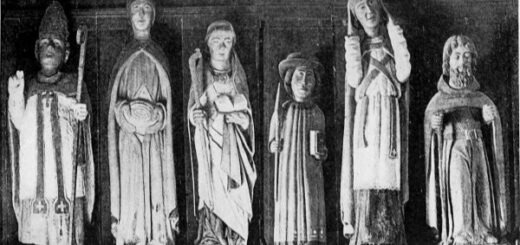Contents
AESOP’S FABLES
By Aesop
Translated by George Fyler Townsend
THE LIFE and History of Aesop is involved, like that of Homer, the most famous of Greek poets, in much obscurity. Sardis, the capital of Lydia; Samos, a Greek island; Mesembria, an ancient colony in Thrace; and Cotiaeum, the chief city of a province of Phrygia, contend for the distinction of being the birthplace of Aesop. Although the honor thus claimed cannot be definitely assigned to any one of these places, yet there are a few incidents now generally accepted by scholars as established facts, relating to the birth, life, and death of Aesop. He is, by an almost universal consent, allowed to have been born about the year 620 B.C., and to have been by birth a slave. He was owned by two masters in succession, both inhabitants of Samos, Xanthus and Jadmon, the latter of whom gave him his liberty as a reward for his learning and wit. One of the privileges of a freedman in the ancient republics of Greece, was the permission to take an active interest in public affairs; and Aesop, like the philosophers Phaedo, Menippus, and Epictetus, in later times, raised himself from the indignity of a servile condition to a position of high renown. In his desire alike to instruct and to be instructed, he travelled through many countries, and among others came to Sardis, the capital of the famous king of Lydia, the great patron, in that day, of learning and of learned men. He met at the court of Croesus with Solon, Thales, and other sages, and is related so to have pleased his royal master, by the part he took in the conversations held with these philosophers, that he applied to him an expression which has since passed into a proverb, “The Phrygian has spoken better than all.”
On the invitation of Croesus he fixed his residence at Sardis, and was employed by that monarch in various difficult and delicate affairs of State. In his discharge of these commissions he visited the different petty republics of Greece. At one time he is found in Corinth, and at another in Athens, endeavouring, by the narration of some of his wise fables, to reconcile the inhabitants of those cities to the administration of their respective rulers Periander and Pisistratus. One of these ambassadorial missions, undertaken at the command of Croesus, was the occasion of his death. Having been sent to Delphi with a large sum of gold for distribution among the citizens, he was so provoked at their covetousness that he refused to divide the money, and sent it back to his master. The Delphians, enraged at this treatment, accused him of impiety, and, in spite of his sacred character as ambassador, executed him as a public criminal. This cruel death of Aesop was not unavenged. The citizens of Delphi were visited with a series of calamities, until they made a public reparation of their crime; and, “The blood of Aesop” became a well-known adage, bearing witness to the truth that deeds of wrong would not pass unpunished. Neither did the great fabulist lack posthumous honors; for a statue was erected to his memory at Athens, the work of Lysippus, one of the most famous of Greek sculptors. Phaedrus thus immortalizes the event:
Aesopo ingentem statuam posuere Attici,
Servumque collocarunt aeterna in basi:
Patere honoris scirent ut cuncti viam;
Nec generi tribui sed virtuti gloriam.
These few facts are all that can be relied on with any degree of certainty, in reference to the birth, life, and death of Aesop. They were first brought to light, after a patient search and diligent perusal of ancient authors, by a Frenchman, M. Claude Gaspard Bachet de Mezeriac, who declined the honor of being tutor to Louis XIII of France, from his desire to devote himself exclusively to literature. He published his Life of Aesop, Anno Domini 1632. The later investigations of a host of English and German scholars have added very little to the facts given by M. Mezeriac. The substantial truth of his statements has been confirmed by later criticism and inquiry. It remains to state, that prior to this publication of M. Mezeriac, the life of Aesop was from the pen of Maximus Planudes, a monk of Constantinople, who was sent on an embassy to Venice by the Byzantine Emperor Andronicus the elder, and who wrote in the early part of the fourteenth century. His life was prefixed to all the early editions of these fables, and was republished as late as 1727 by Archdeacon Croxall as the introduction to his edition of Aesop. This life by Planudes contains, however, so small an amount of truth, and is so full of absurd pictures of the grotesque deformity of Aesop, of wondrous apocryphal stories, of lying legends, and gross anachronisms, that it is now universally condemned as false, puerile, and unauthentic. It is given up in the present day, by general consent, as unworthy of the slightest credit.
GEORGE FYLER TOWNSEND
You can find out more about Aesop’s fables here or read some of their most beautiful fables here.
Listening to Aesop’s faebles on Youtube
In case you are a bit lazy to read, you can also listen to Aesop’s fables on Youtube















